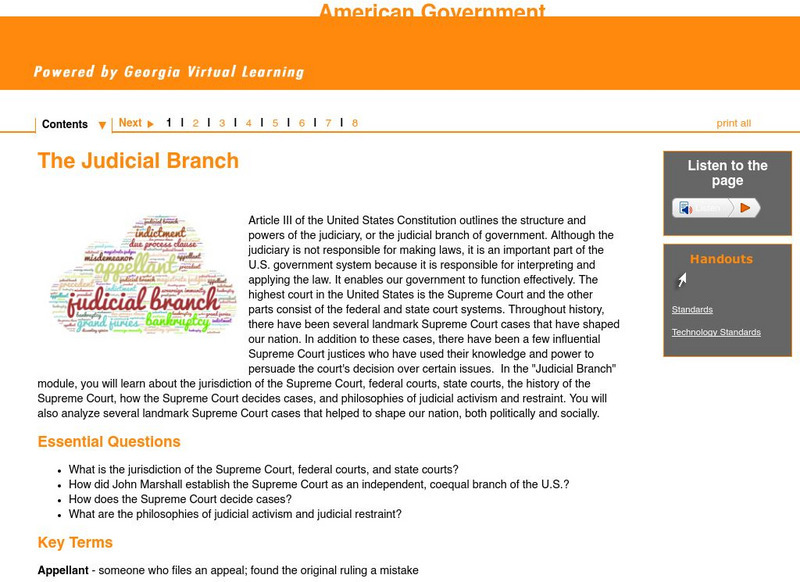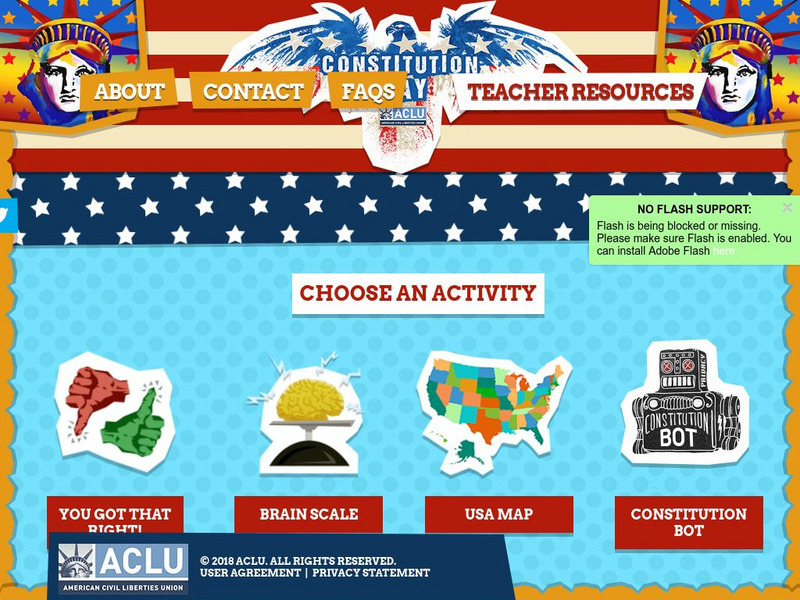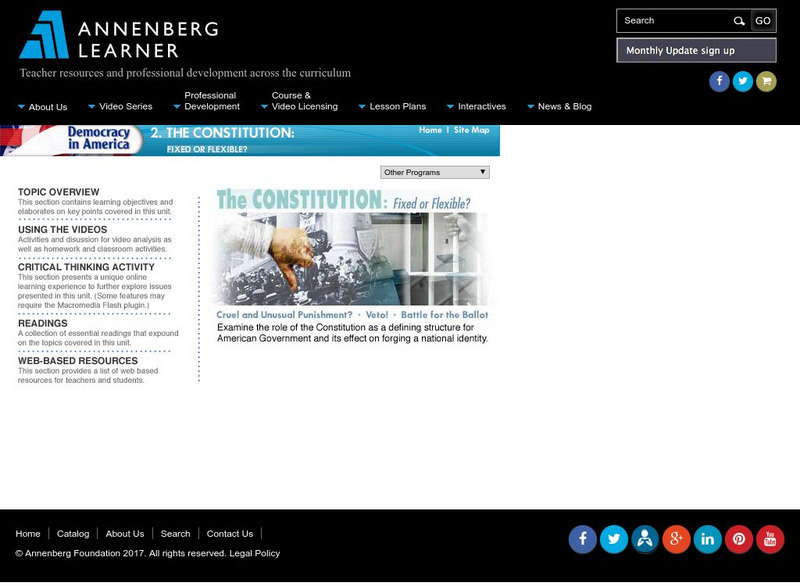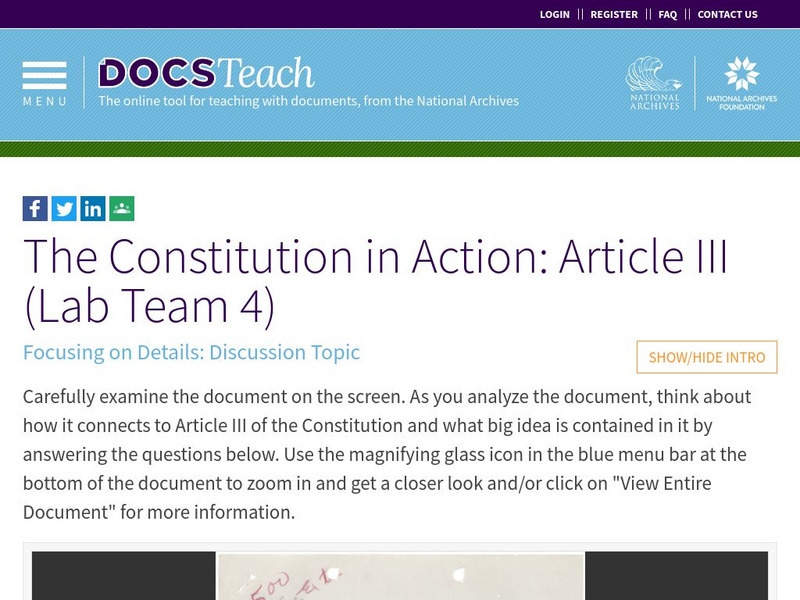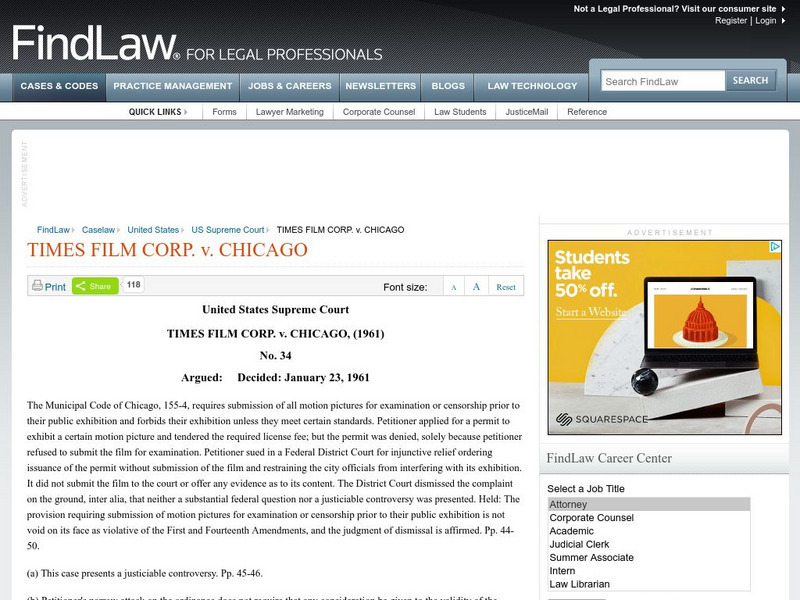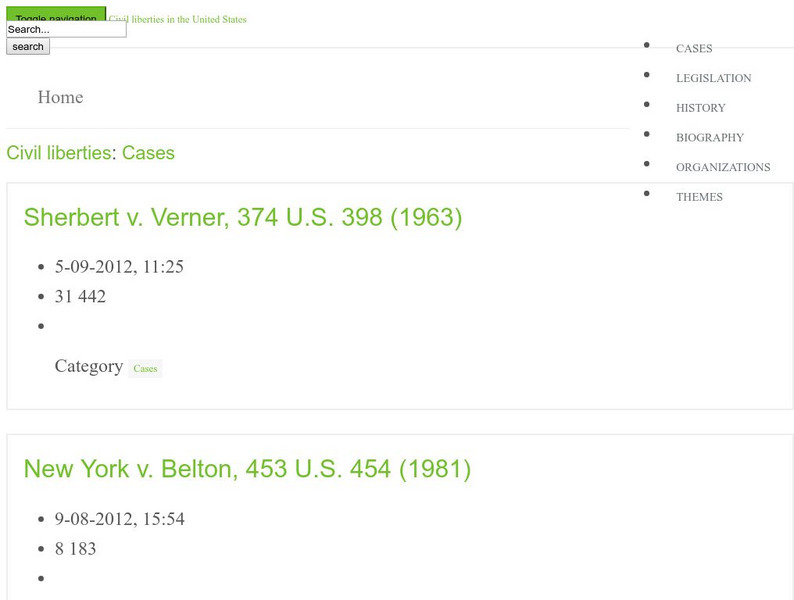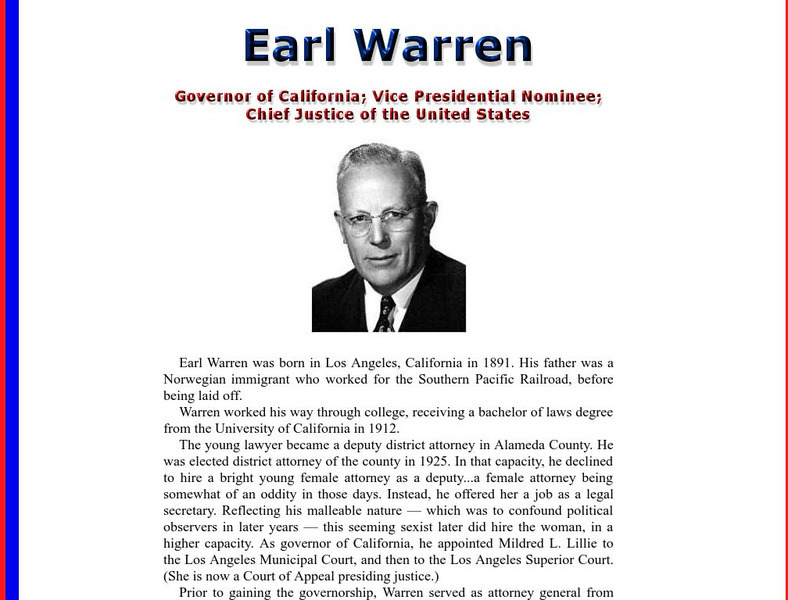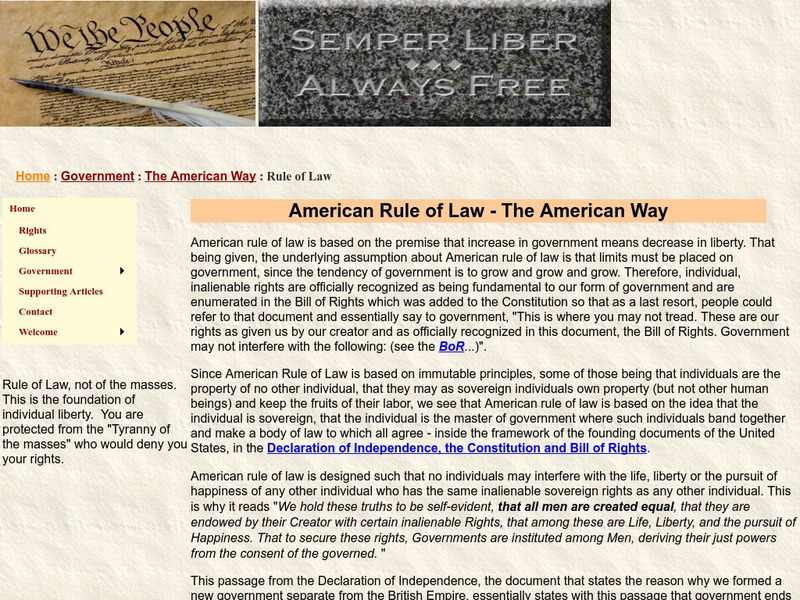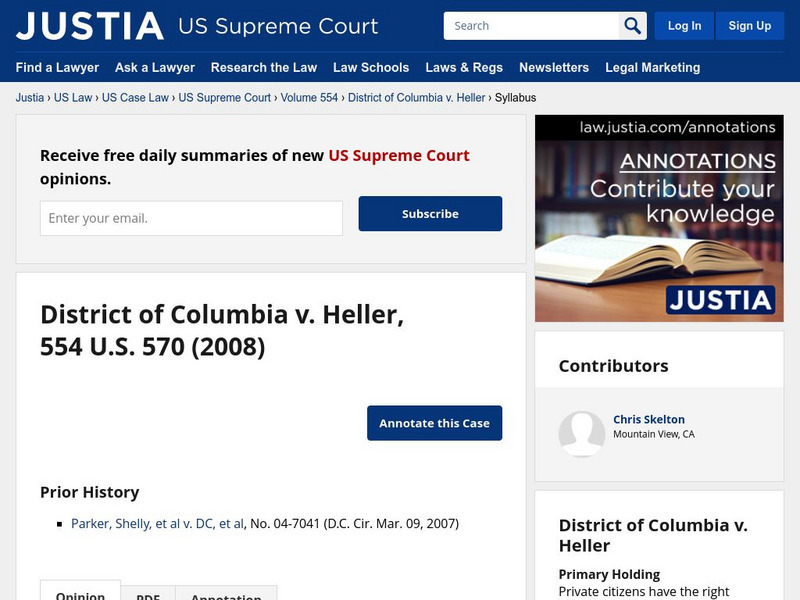American Psychological Association
A Silent National Crisis: Violence Against Teachers
School violence is becoming an epidemic in America. How can schools protect their teachers—and teach them how to protect their students? Read an important brochure about how violence affects teachers personally, emotionally, financially,...
iCivics
I Civics: Mini Lesson: Judicial Activism & Restraint
Lesson teaches the judicial philosophies of activism and restraint and also explores criteria through which students can evaluate news-related opinion pieces and practice judging the value of a Supreme Court-related opinion piece of choice.
Other
Fundamentals of Judicial Philosophy: Activism
This short article discusses judicial restraint versus judicial activism, with constitutional and case study references.
iCivics
I Civics: Judicial Review
This lesson explores the case that established the power the Supreme Court has today. Students will learn how the decision in Marbury v. Madison influenced the structure of the third branch, and how the Court's use of judicial review can...
Georgia Department of Education
Ga Virtual Learning: American Government: The Judicial Branch
Complete and comprehensive virtual learning unit on the Judicial Branch. Module includes downloads, interactive activities, questions and writing assignments as well as links to supplemental material. Students can link to online textbook...
Other
American Civil Liberties Union: Constitution Day Activities
Six activities teach students about the U.S. Constitution. Learn about checks and balances, the Bill of Rights, some of the history of the document, and how each of the states became a state. The site also provides teacher resources,...
Annenberg Foundation
Annenberg Learner: Democracy in America: The Courts: Our Rule of Law
This unit provides a comprehensive look into the value of the U.S. court system as a means to maintain the safety of American citizens. Offers video, readings, web resources, and activities.
Harry S. Truman Library and Museum
Harry S. Truman Library & Museum: Three Branches of Government
Interactive teaching unit for Grades 5-8 that helps to explain the three branches of government and the the balance of power. Topics covered include balance of government, how a bill becomes a law, the amendment process, the Legislative...
Annenberg Foundation
Annenberg Learner: Democracy in America: The Constitution: Fixed or Flexible?
This unit explores the timeless qualities of The U.S. Constitution, the opportunities to amend it, and how it is a pillar of the American identity, through these activities, videos, and outside resources.
US Government Publishing Office
Ben's Guide to u.s. Government: Grades K 2
Here you can learn all about the U.S. Government! Find information on our nation, how our government works, your own neighborhood, and the main government symbols. Games and other activities are also included!
Other
National Council for the Social Studies: Selecting Supreme Court Justices
A panel discusses the questions of whether the Senate or President hold more power in selecting Supreme Court Justices, the impact of interest groups on the process, and whether changes need to be made to the confirmation process. Along...
Annenberg Foundation
Annenberg Learner: Democracy in Action. Federalism: u.s. V. the Sates
U.S. v. the States delves into the ongoing constitutional dilemma between the federal government and individual state governments illustrated through Video on Demand, activities, readings, etc.
US National Archives
Docsteach: The Constitution in Action: Article Iii (Lab Team 4)
In this activity students will analyze the Opinion of the Court by Chief Justice Earl Warren in the Case of Miranda v. Arizona and identify how the document demonstrates content contained within Article III of the Constitution in action.
PBS
Wnet: Thirteen: Supreme Court: Capitalism and Conflict: Court History
During the Progressive Era many state laws were passed that dealt with regulation of working conditions. Read about the Supreme Court history in judging the constitutionality of these laws.
Thomson Reuters
Find Law: u.s. Supreme Court: Times Film Corp. V. City of Chicago (1961)
Read the majority opinion of the U.S. Supreme Court in Times Film Corp. v. City of Chicago, a 1961 case that focused on free speech and obscenity.
Other
Civil Liberties: Lyng v. Northwest Indian Cemetery Protective Association
How does the constitution resolve a conflict between the government's property rights and the right of groups to engage in religious practices on lands they consider sacred? The Supreme Court answered that question in favor of the...
Other
New Talk: What Is the Role of the Courts in Making Social Policy?
New Talk provides an online forum where non partisan experts in their field can discuss relevant domestic issues of today. This discussion focuses on the role of courts in setting social policy and how judges should be selected.
Other
Metropolitan News Company: Earl Warren
This site gives an informative look at Supreme Court Justice Earl Warren's life. It also tells the interesting story of how he came to be Chief Justice.
University of Missouri
Exploring Constitutional Conflicts: Baker v. Carr
Primary source of the Supreme Court case Baker V.Carr.
Other
Semper Liber: American Rule of Law the American Way
American rule of law is based on the premise that increase in government means decrease in liberty. That being given, the underlying assumption about American rule of law is that limits must be placed on government, since the tendency of...
Other
Justia: District of Columbia v. Heller
Overview of the Supreme Court case, District of Columbia v. Heller.
Other
Justia: Hollingsworth v. Perry
The California Supreme Court held that limiting marriage to opposite-sex couples violated the California Constitution; state voters then passed a ballot initiative, Proposition 8, amending the state constitution to define marriage as a...
Other
Lambda Legal: Hollingsworth v. Perry
Perry v. Schwarzenegger (now known as Hollingsworth v. Perry) was filed on behalf of two same-sex couples by attorneys Ted Olson and David Boies in May 2009, asking for a preliminary order blocking Prop 8. When California Governor Arnold...
Other
Redistricting America: Baker v. Carr
Charles Baker, a resident of an urban neighborhood in Tennessee, filed suit in federal court against Joe Carr, then Secretary of State of Tennessee. Baker sought a court injunction to postpone elections until the State had fulfilled its...


